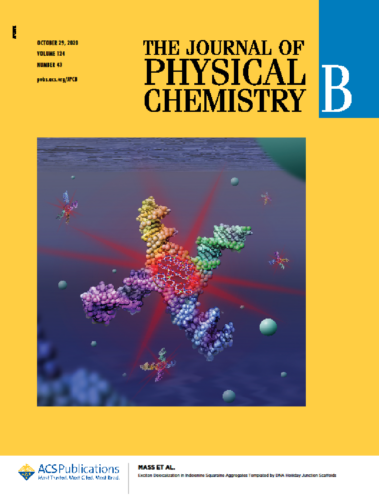
-Article by research program manager John Hall, professor of materials science and engineering Bill Knowlton, and research scholar Olga Mass.
Human use of dyes dates back thousands of years. Their use is so ubiquitous that one can easily lose track of their various applications, which are based to a large degree on a dye’s ability to absorb light in the visible range and in other useful regions of the electromagnetic spectrum. With the advent of understanding dye structure-property relationships at the molecular level in the previous century, researchers gained not only an understanding of how dyes function—as a single dye molecule or in aggregates of dyes—but also how these functions can lead to a variety of new applications.
To take the next step and engineer dye structures and dye aggregate interactions to achieve next-generation applications, such as exploring quantum entanglement and implementing quantum computing, two things are missing. These are: which dyes could be best manipulated to achieve desired properties and how best to control the interactions of multiple dyes in space and time to achieve desired outcomes.
Researchers at Boise State now have advanced the understanding of how to address these two key aspects of dye engineering. In a recent paper published in the Journal of Physical Chemistry B (citation and link at the bottom of this page), research scholar Olga Mass and colleagues from the Quantum DNA research group in the Micron School for Materials Science and Engineering explored exciton delocalization in a commercially available blue squaraine dye. Squaraine dyes, named after their characteristic square center, have been around since the mid-1960s and because of their photochemical stability and intense light absorption profile in the visible and near-infrared regions they already have found use in such applications as solar cells and biological imaging.
Mass and the team’s novel contribution is exploring in a quantitative manner the excitonic interactions in aggregates (two configurations of two dyes and one of four dyes) of these dyes in which the dye configurations are controlled by adhering them to a scaffold composed of deoxyribonucleic acid (DNA) in the form of a Holliday junction. More specifically, in this type of junction the DNA is arranged in four double-stranded arms joined together, with the dyes tethered at strand points within the junction.
An exciton is an electrically neutral quasiparticle consisting of an electron (negatively charged) and hole (positively charged). When a dye molecule in an aggregate is excited by light and the resulting exciton is created, it is shared between dyes or delocalized across the dyes: that is, its position is likely to be as much on one dye as the other. Known as exciton delocalization, this process results in a form of energy transfer with minimal energy loss that provides the basis for new types of applications.
Through a variety of quantitative measurements, Mass and the team demonstrated for the first time that squaraine aggregates “templated” on a DNA Holliday junction scaffold exhibited exciton delocalization in all aggregate configurations investigated. In addition, by application of a unique theoretical model developed at Boise State, they showed that the strength of the delocalization achieved was comparable to the previously well-researched cyanine dye Cy5. The theoretical modeling also provided structural insights into how the dyes oriented to each other once templated to the DNA Holliday junction, which is key information for understanding how to control dye interactions.
The current research results point favorably toward the use of squaraine dye aggregates in next-generation applications driven by molecular excitons. As a result, future research will involve exploring both how manipulating squaraine dye structures can lead to desired dye properties and further refinement of DNA-based scaffolds as a means to control dye interactions.
Publication citation to include at the end of the article and before the disclaimer: Olga A. Mass, Christopher K. Wilson, Simon K. Roy, Matthew S. Barclay, Lance K. Patten, Ewald A. Terpetschnig, Jeunghoon Lee, Ryan D. Pensack, Bernard Yurke, and William B. Knowlton, Exciton Delocalization in Indolenine Squaraine Aggregates Templated by DNA Holliday Junction Scaffolds, Journal of Physical Chemistry B 2020, 124:9636−9647. https://pubs.acs.org/doi/10.1021/acs.jpcb.0c06480
Required disclaimer for this grant-funded research: “This research was supported wholly by the U.S. Department of Energy (DOE), Office of Basic Energy Sciences, Materials Sciences and Engineering Division, and DOE’s Established Program to Stimulate Competitive Research (EPSCoR) (Award DE-SC0020089), except the initial work on squaraine transverse dimer modeling was sponsored by the National Science Foundation INSPIRE (Award no. 1648655). Any opinions, findings, and conclusions or recommendations expressed in this material are those of the author(s) and do not necessarily reflect the views of the U.S. Department of Energy, Office of Basic Energy Sciences, Materials Sciences and Engineering Division, and DOE’s EPSCoR or the National Science Foundation.”